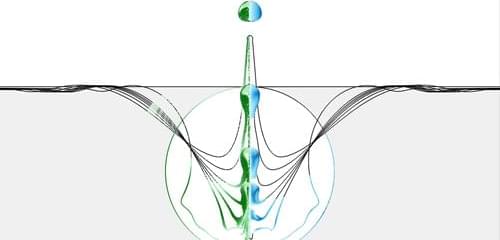Experiments reveal new details of the process by which contaminants in the ocean could reach the atmosphere through the bursting of bubbles in foam.
The bursting bubbles in ocean foam produce a mist of droplets that can contain enhanced concentrations of ocean pollutant particles. In single-bubble lab experiments, researchers have now shown that the inclusion of a particular particle in an airborne droplet depends on some details of the fluid motion that occurs when the droplet forms [1]. The researchers measured the efficiency with which particles are transferred to droplets and also ran simulations of the fluid motion. Their model predicts that the airborne droplets should contain more large particles, such as microplastics, and fewer smaller particles, such as viruses, than expected based on previous theories.
The droplets produced by bursting air bubbles in ocean foam provide the atmosphere’s main source of ocean-originated particles, including pollutants and bacteria, and environmental scientists want to understand this ocean-to-atmosphere transfer process in detail. Experiments in the 1970s showed that bursting bubbles transport pathogens into the environment and also that the droplets produced contain these particles at high concentrations.
